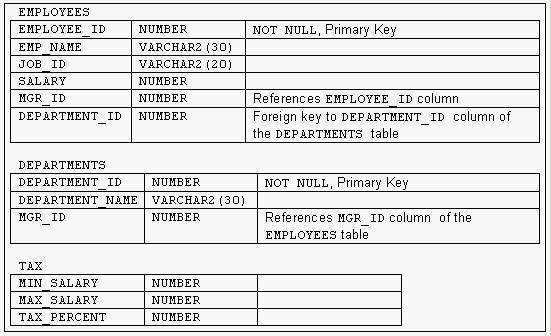出自:Oracle认证
Click the Exhibit button to examine the structures of the EMPLOYEES, DEPARTMENTS, and TAX tables. For which situation would you use a nonequijoin query?()
A:to find the tax percentage for each of the employees
B:to list the name, job_id, and manager name for all the employees
C:to find the name, salary, and the department name of employees who are not working with Smith
D:to find the number of employees working for the Administrative department and earning less than 4000
E:to display name, salary, manager ID, and department name of all the employees, even if the employees do not have a department ID assigned